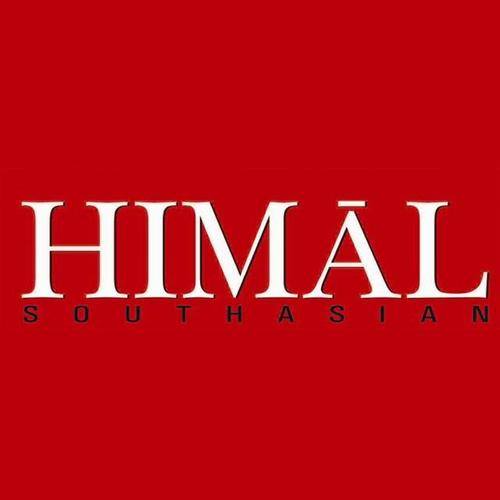Although the federally-appointed lieutenant governor of Jammu and Kashmir said that only influential people who had grabbed state land by misusing their power would be targeted by the drive, he also directed the officials not to target “poor and common” people. However, no official order was passed in this regard to define who would be protected from the eviction drive. Further, news reports suggested that small-time shopkeepers, businessmen and others also faced eviction by bulldozer. The giant machines, that have become symbolic of the Bharatiya Janata Party’s rightwing politics across India, are used to raze properties owned by Muslim activists and protesters who are critical of the regime. While the large-scale demolition drive in what was until 2019 India’s only Muslim-majority state has been temporarily stopped, what it symbolises runs deep into the new political structure of Jammu and Kashmir; it resurrects a century-old monarchical system based on economic dispossession and cultural erasure.
BJP negating Jammu and Kashmir’s land reform history
Until the mid-1900s, most Kashmiri Muslims were landless farmers who did not have ownership rights over the land they cultivated. The jagirdari system, established by the Maharaja Hari Singh’s Dogra dynasty, would often coerce the landless Kashmiri population into forced labour and impose exorbitant taxes on their harvest. After the Hindu monarch signed the instrument of accession with India, Sheikh Abdullah, a socialist Kashmiri leader, was elected the prime minister of Jammu and Kashmir in 1948. Abdullah implemented a slew of reforms to abolish the feudal jagirdari system, enacting a land ceiling law that redistributed thousands of acres of land to landless farmers. The “land to the tiller” movement established him as the region’s undisputed leader and created a welfare state that sought to reverse the effects of century-old Dogra rule. Over the next few years, initiatives such as the “grow more food” policy encouraged people to cultivate state land to increase agricultural production. Later, in 2001, the Roshni Act, formally called the Jammu and Kashmir State Land (Vesting Ownership to the Occupants) Act, was passed to grant ownership rights to people residing on state lands.
Since the revocation of Kashmir’s limited autonomy and the end of its statehood in 2019, turning it instead into a Union Territory, the administration, under the leadership of the Hindu nationalist BJP, has been actively working to erase the region’s history of progressive land reforms and reshape its political legacy into a regressive monarchy. Both Sheikh Abdullah’s birth anniversary and the Kashmir Martyrs’ day, which used to be celebrated on 13 July every year to commemorate the 22 protesters killed by the Dogra forces in 1931, were removed from the list of public holidays in 2019. This marked the beginning of Jammu and Kashmir’s political restructuring, which the BJP sees as essential for its total integration with India. Even though Kashmiris largely associate Hari Singh’s rule with brazen economic exploitation and violence, the party imagines him as a pro-India Hindu ruler who made the region’s accession to India possible. His Hindu identity, and the fact that around half of the population in the Hindu-majority Jammu division are Dogras, has further incentivised the BJP to appropriate the monarchy and project it as the fundamental heritage which defines the region. To this end, in September last year, it declared the Maharaja’s birthday a public holiday, calling him “a great educationist, progressive thinker, social reformer and a towering man of ideas and ideals.”
The refashioning of Jammu and Kashmir’s political character goes well beyond these titular changes, as we have seen with the recent “anti-encroachment” drive. Past governments’ land reforms are often credited for Jammu and Kashmir’s relatively better performance in various socio-economic indicators. However, a new property tax, announced in February this year, threatens this progress. The new tax will require landowners in the municipal limits of the region to pay up to 15 percent of the annual taxable value of land and the building(s) situated on it. With the region’s economy reeling from the effects of two consecutive lockdowns (a security lockdown imposed after the abrogation of Article 370 in 2019, followed by the Covid-19 lockdown), the tax will make it difficult for the locals to own land. The recent land drive, coupled with the tax policy, will also disincentivise people from buying new land and retaining the land they already own. The BJP-led central government had claimed that Article 370 was one of the reasons for the lack of “development” in Jammu and Kashmir and used this as a justification for abrogating the law. The government has been trying to set up industries in Jammu and Kashmir but has not achieved much success. The recent moves will make it easier for the administration to allocate more land to Indian companies and force locals to give up their land for industrial purposes. Industrialisation, with or without any positive impact on growing unemployment in Jammu and Kashmir, will further feed into the development narrative that the BJP government has been pushing for the last few years.
A legislative blitz to disempower Kashmiris
The Roshni Act, which was declared unconstitutional by the Jammu and Kashmir High Court in October 2020, has been historically opposed by the BJP for benefiting Muslims and promoting “land jihad” – a conspiracy theory propagated by the Hindu rightwing that claims that Muslims buy and encroach on land to enact demographic change. The Union Minister Anurag Thakur called the Roshni Act the “biggest land scam of India” and alleged that Muslims were indulging in “land jihad” by taking over state land in the Hindu-majority Jammu to tamper with the region’s demography. It later came to light that most of the Roshni Act beneficiaries in Jammu were non-Muslims, and several of them were prominent BJP leaders. The Jammu and Kashmir administration later filed a review petition in the Jammu and Kashmir High Court seeking a modification of the high court order and claiming that striking down the entire law would negatively impact common people. However, before the BJP backtracked on the Roshni Act, many pro-government national media channels ran a large-scale campaign to paint the law as communal and supported the party’s claim that “land jihad” was happening in Jammu.
The demonisation of Muslims and the “anti-encroachment” drive are signs of systemic dispossession, which are now being extended to civil administration. The proposed laws by the BJP-led union government aim to designate new social groups as Scheduled Tribes and Scheduled Castes. However, concerns have been raised that such identification may disproportionately reduce the representation of Kashmiris, while extending reservation benefits in government jobs and education to other groups. A majority of these social groups reside in the Hindu-majority Jammu region and will surely help the BJP to engineer support for the upcoming elections. These laws are an extension of last year’s delimitation exercise, which added six seats in the Jammu region and only one in Kashmir. Several changes have already been made to the existing reservation rules, which has disadvantaged Kashmiris. For example, a 4 percent quota in jobs and admissions was introduced for the Pahari-speaking population in 2020. The same year also saw a cut in the quota for Reserved Backward Area category from 20 percent to 10 percent. A majority of beneficiaries in this category were Kashmiris. These changes have started to show their impact; only 32 Kashmiri candidates were featured among 181 candidates who qualified for the region’s topmost civil service examination this year.
Less Kashmiris in top posts in civil administration means that it will be easier for the government to implement policies that are opposed by the masses but serve the political interests of the incumbent party. Years of central rule in Jammu and Kashmir have seen several such policies being implemented without the people’s consent, and these policies have been sustained despite mass opposition. The imposition of property tax is one such policy which people from across the region have opposed. It is safe to say that the centrally-appointed Union Territory administration will not roll back this decision since they are not elected and function like a mechanical bureaucracy. The only obstacle they may face, and possibly anticipated by the government, is from the Kashmiris working within the administration. The exclusion of Kashmiris from the civil administration kills two birds with one stone. First, it reinvents the political image of the region into a shadow of its feudal past. Second, it removes any potential obstacles in implementing policies that makes this overhaul possible.
Clearly, the BJP’s reimagination of Jammu and Kashmir’s political legacy and its model of governance is regressive and based on the exclusion and erasure of Kashmiris. The temporarily halted land drive and the ongoing and upcoming changes to reservation laws are symptoms of a new political system that seeks to valorise the dreaded Hindu monarchy and obscure the socialist character of the erstwhile state. The Naya Kashmir or “New Kashmir” promised by the BJP, after removing the limited autonomy of the region in 2019, is actually an old Kashmir that treats Kashmiris as mere subjects of the state with minimal rights and negligible representation in its affairs.
Maknoon Wani is a journalist and academic mentor and an incoming graduate student at Oxford Internet Institute, University of Oxford. Maknoon has extensively covered the Kashmir conflict, internet shutdowns, and anti-minority hate speech in India. His interest also lies in technology policy and internet governance.



